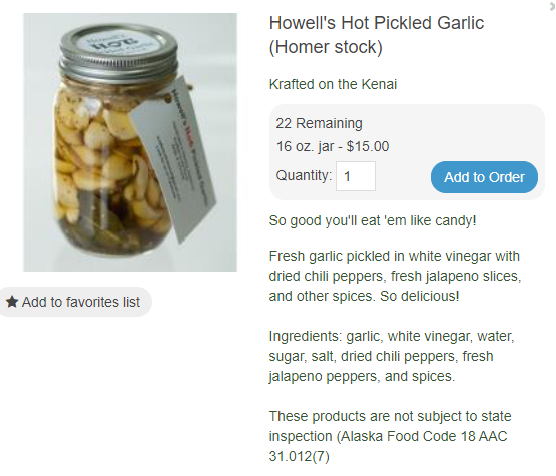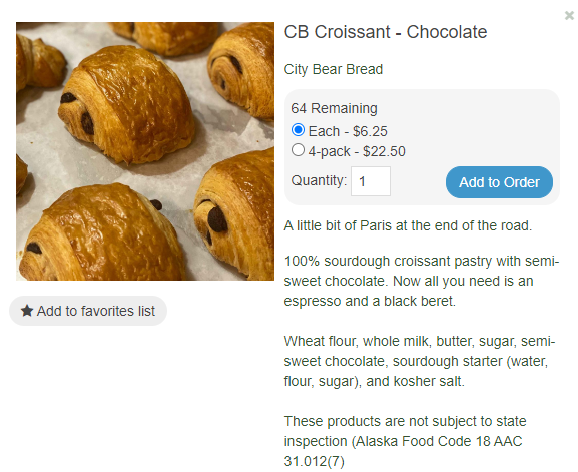With appropriate labeling, food hubs can provide consumers with essential information about the products they purchase while also promoting transparency and food safety. Labeling of products sold through food hubs should be clear, informative, and compliant with relevant local, state, and federal regulations, as well as outlined in a food hub’s manual. Some food hubs require information, like an ingredients list, to be provided in the online listing, as well as labeling on the physical product.
Here are some key considerations for labeling food hub products:
- Producer Information: Include the name and contact information of the producer or food hub responsible for the product. This fosters transparency and accountability within the supply chain, and helps differentiate products from other producers’ products.
- Product Name: Clearly state the name of the product. Make sure it accurately describes what the product is, such as “Organic Apples” or “Free-Range Eggs.” (Note: if you using terms like organic, ensure the producer has the proper certifications/ the product meets any other specific standards).
- Ingredients: List all ingredients used in the value-added product, This helps consumers with allergies or dietary restrictions make informed choices. Highlight any allergens present in the product, such as nuts, dairy, eggs, soy, wheat, sesame, etc.
- Date Marking: Provide information on when the product was packed or produced, as well as any expiration or “use by” dates. This helps consumers assess the freshness and shelf life of the product.
- Storage Instructions: Offer guidance on how to store the product safely to maintain its quality and freshness.
- Cooking/Preparation Instructions: If necessary, provide instructions on how to prepare or cook the product safely and effectively.


A note on cottage foods:
As part of the cottage food variance in Alaska, food hubs agree that all vendors of cottage foods label their products with more details than is required in the Alaska Food Code exemption for cottage foods. This labeling allows for the consumers to make informed decisions about the food without a face-to-face meeting with the individual producer or vendor, and also allows traceback of the food item if there is a complaint or illness associated with the food. Labeling is also an excellent way for a food vendor to market their food.
Food hubs must train their vendors to follow appropriate labeling procedures. Cottage food producers participating in a food hub online marketplace or other food hub venue must label their products with the following from the State of Alaska Food Code 18 AAC 31.012:
- a full list of ingredients,
- the date the product,
- an Alaska Business License number or the name, physical address, and telephone number of the individual who prepared the food, and
- the statement “THESE PRODUCTS ARE NOT SUBJECT TO STATE INSPECTION” (unless produced in an approved or permitted establishment).